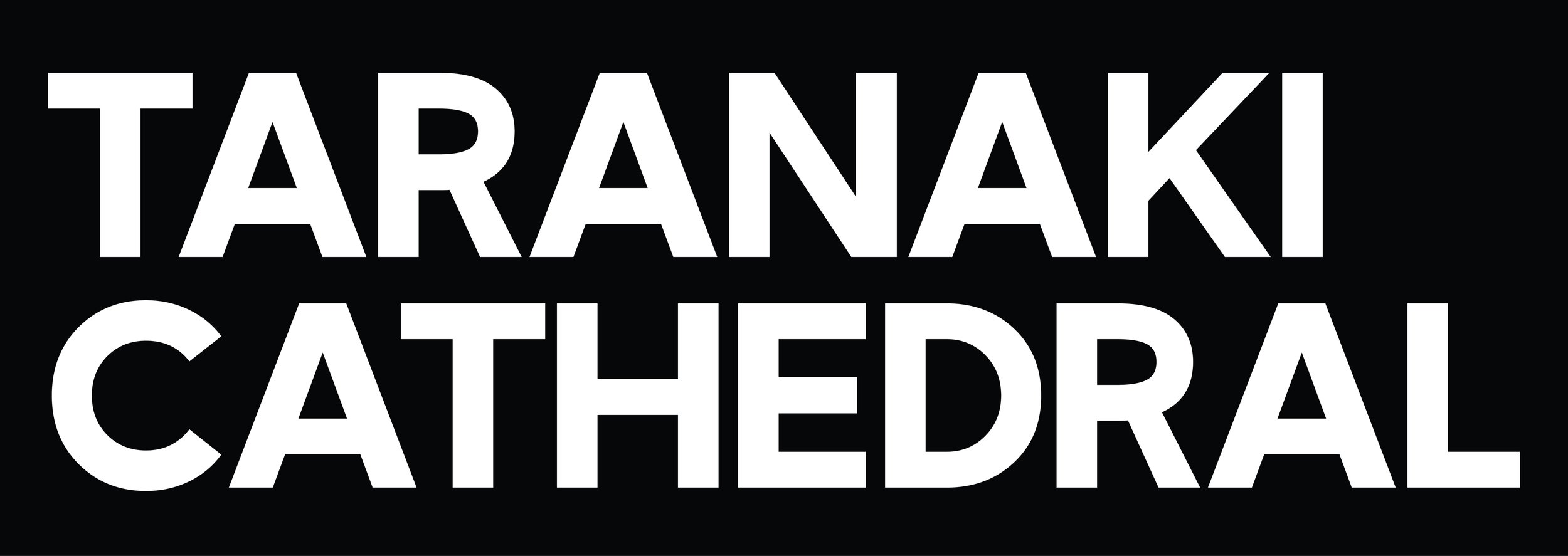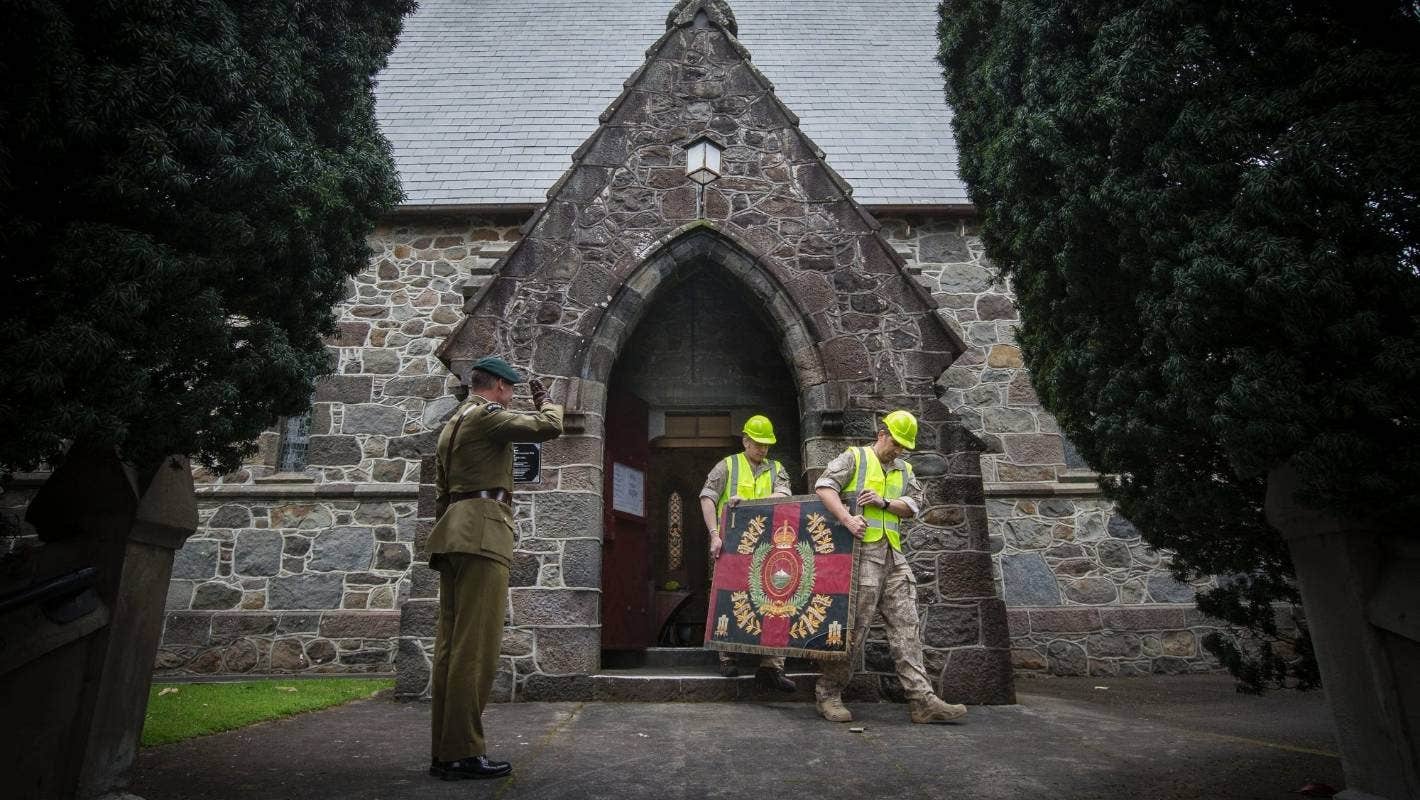OUR HISTORY
Ko ia hoki tō tatou maunga rongo, nāna i mea ngā mea e rua kotahi, whakahoroa iho e ia te pātu e ārai ana i waenga.
For he himself is our peace, who has made the two groups one and has destroyed the barrier, the dividing wall of hostility.
Epeha 2:14 / Ephesians 2:14
Pūkākā
Our Cathedral sits on the lush hillside of Pūkākā, a piece of land rich with history. In the 1430s Te Atiawa occupied Pūkākā, dug trenches, and planted kumara. 300 hundred years later, in the 1730s, Pūkākā became a significant pā site. When the first English settlers arrived in 1841 they found the gardens of Pūkākā and it was here on fertile soil that the Church of St Mary was born.
In 1842 George Selwyn, a 31-year-old English bishop with some knowledge of Te Reo Māori, travelled by foot to Ngāmotu to establish an Anglican presence in Taranaki. Selwyn acquired the land at the base of Pūkākā to build a church through his relationship with the Plymouth Company and a Crown grant, then set about to find a priest who could serve both European and Māori throughout the parish, which at the time extended from Pihama in South Taranaki to Waitara in the North. The following year, in 1843, 23-year-old William Bollard and his young wife were chosen for the job. Bollard loved Taranaki and called New Plymouth the prettiest spot in New Zealand. He walked through the region, visiting his parishioners, holding a carved staff gifted to him by his Māori friends.
Original Church of St Mary’s
When William Bollard first arrived in Ngāmotu the congregation was meeting in a small raupo hut on Currie Lane. After the hut blew away in a storm, Bollard was determined to build his new church in stone. And so it was that St Mary’s was built from stones from Kawaroa Reef and the Huatoki River, which descend from Taranaki Maunga. The first stone for the Church was laid 25 March 1845, which was “Lady Day” the Feast of the Annunciation of the Virgin Mary, - hence the dedicated name for the Church.
Saint Mary’s early years were very productive, with Vicar William Bollard conducting 192 baptisms, beginning with the first child in St Mary’s register, Rawiri Mahi Hokoparaetoiti. Bollard was greatly loved and died tragically after only four years of ministry. His simple tombstone bears the inscription “Their works do follow them.”
Pūkākā Barraks
The vision of St. Mary’s was carried on by those who followed, notably Archdeacon Henry Govett, with a remarkable 50 years of ministry. Govett learned to speak Te Reo Māori fluently and arrived in Ngāmotu in 1848. It is interesting to note that in these early years of St. Mary’s Church 46% of the recorded births, deaths & marriages of this time were Māori. From 1845-1850 St Mary’s served the needs of both Māori & settlers.
As conflict grew between settlers and Māori, Govett was known for making a great effort to bring about a better understanding between the two people.
As the settler population began to grow in Ngāmotu, there was growing pressure for Māori to sell their land, which led to disputes over sales and conflict. With the settlers’ interests in mind, 275 Imperial troops descended on Pūkākā to set up a military headquarters. By 1855, the peak of Pūkākā had been reduced by 15 meters, its top leveled to build barracks and the pā destroyed by earthworks. The shape of Pūkākā was changed forever and it was renamed Marsland Hill. In March 1860 full war broke out between the European Settlers and Māori. Pūkākā became home to the Imperial military’s most important establishment during the Taranaki Land Wars. It was at this time that St. Mary’s Church also was withdrawing its service to Māori and redirecting its attention to supporting the military and at times housing the soldiers’ ammunition.
In November 1860, Wetini Taiporutu (Ngāti Hauā) led 150 warriors to challenge the British in Taranaki. The battle took place at Mahoetahi pā near New Plymouth. The Waikato war party was defeated, and Wetini Taiporutu fell along with 5 other rangatira. After their deaths, Archdeacon Govet arranged for the chiefs to be buried in the grounds of the cathedral.
The last of the imperial troops departed Pūkākā in 1870. Then in 1878 a hatchment, bearing the insignia of the Regiment was painted and hung without ceremony in St. Mary’s. In the years to come more hatchments were hung on the walls, contributing to St Mary’s reputation for a time as The Garrison Church.
On the 24th of September 1972 a carved Memorial, with the words “Kia aroha koutou tētahi ki tētahi” (love one another) was unveiled and dedicated in St. Mary’s. This memorial is a symbol of peace and a permanent reminder that the wars of the 1860s were by no means one-sided and that in love Māori and European people of the land can be one.
In 1976 a viaduct was opened across Carrington Street, increasing the traffic flow past St. Mary’s. A newspaper at the time stated: “St. Mary’s could be in for a shake up!” No one knew at the time what the impact of traffic-vibration would be on old stones and mortar.
In the 1990s Archdeacon Peter Butt’s vision for Christian education classrooms ‘adjacent’ to St. Mary’s came into being, with Sir Paul Reeves (who was archbishop and then Governor-General at the time) leading seminars. Te Manu Hononga - Sir Paul Reeves centre is a continuation of that educational training today.
In 1994 St. Mary’s was proclaimed New Zealand’s first regional Pro Cathedral (shorthand for “provisional cathedral). Bishop David Moxon explained, “I believe that this affirmation of St. Mary’s role as a gathering place and mission resource place, in partnership with the diocesan cathedral, will both strengthen and integrate Taranaki as a significant part of our diocese, so often cut off by distance.”
In 1999 the Reverend Canon Philip Richardson was appointed the first Bishop in Taranaki. To prepare the way for the new bishop, a Taranaki Cross made of locally milled timber from the old St Cuthbert’s church in Manaia was taken to every church around the mountain. This ‘Cross of Love, Prayer and Unity’, was seen, touched, and blessed by people who gathered to pray together and share the Eucharist. On 10 July 1999, after being blessed, it was housed at St Mary’s
Lieutenant Colonel Brendon Jull pays his respects as the colours are removed from St Mary's Cathedral (March 2013).
On March 6, 2010 the Church was consecrated as the Taranaki Cathedral Church of St Mary, and Bishop Philip Richardson was installed. Later that year, Archdeacon Tiki Raumati was installed as the first Cathedral kaumatua
March 2013 Military Hatchments were removed from the walls of St. Mary’s
In February 2016 the Church Building was closed due to Earthquake Safety, and worship services were moved across the street to the Peace Hall. In September 2016 members of the New Zealand Defence Force removed the battalion, regimental, and Queen’s colours and a series of hatchments.
In 2023 Te Whare Hononga, Waikato Warriors’ Memorial and the renovated Vicarage were officially opened. The trial phase of strengthening the Cathedral building was also underway.






